Multicomponent Transient Electromagnetic Exploration Technology and Its Application
Abstract
:1. Introduction
2. Forward Modelling
2.1. Multicomponent Response Characteristics of a Small, Inclined plate
2.2. Multicomponent Response Characteristics of a Big, Inclined Plate
2.3. Analysis of Forward Modeling Results
3. Multicomponent Transient Electromagnetic Method Tests in Copper-Nickel Ore
3.1. Geological Setting
3.2. Method and Technique
3.3. Processing and Explanation
3.4. Z-Component Quantitative Inversion
3.4.1. Section Inversion Interpretation and Comparison
3.4.2. Three-Dimensional Geoelectric Model Analysis
4. Conclusions
- (1)
- Similar to the vertical component, the change trend of the zero-contour intersection of HC is directional, and its movement direction always points to the center of the ore body projected on the ground. This inspired us to quickly determine the anomaly center orientation through a 3C line in field work, which substantially reduced the cost of field data acquisition.
- (2)
- Under certain conditions, the tendency of the ore body can be judged according to the variation characteristics of the HC ‘s zero contour.
- (3)
- Multicomponent combined analysis overcomes the limitation of traditional vertical component interpretation and improves the reliability of interpretation results.
Author Contributions
Funding
Data Availability Statement
Acknowledgments
Conflicts of Interest
References
- El-Kaliouby, H. Groundwater prospecting in a hard-rock coastal area using off-set TDEM method: Case study. In SEG Technical Program Expanded Abstracts; Society of Exploration Geophysicists: San Antonio, TX, USA, 2019; pp. 2755–2758. [Google Scholar]
- Srigutomo, W.; Warsa, W.; Sule, R.T.; Widarto, D.S. Time-Domain Electromagnetic (TDEM) Baseline Survey for CCS in Gundih Area. In Proceedings of the 12th SEGJ International Symposium, Tokyo, Japan, 18–20 November 2015; pp. 1–6. [Google Scholar]
- Wang, X.C.; Deng, X.H.; Chen, X.D.; Zhang, J.; Wu, J.J.; Zhi, Q.Q.; Yang, Y. Application Effect of TEM Based on High Temperature Superconducting Sensor in Qingchengzi Ore-Concentrated Area. Earth Sci. 2021, 46, 1871–1880. [Google Scholar] [CrossRef]
- Singh, N.P.; Mogi, T. Electromagnetic response of a large circular loop source on a layered earth: A new computation method. Pure Appl. Geophys 2005, 162, 181–200. [Google Scholar] [CrossRef]
- Al-Salmi, H.A.; El-Kaliouby, H. Application of Time-Domain Electromagnetic method in Mapping Sea water intrusion in Al-Batinah Coastal plain, Al Batinah, Sultant of Oman. In Proceedings of the International Conference on Engineering Geophysics, Al Ain, United Arab Emirates, 15–18 November 2015. pp. 1–6. [CrossRef]
- Juillard, J.; Barmon, B.D.; Berthiau, G. A simple analytical 3D eddy current model. IEEE Trans. Magn. 2000, 36, 258–266. [Google Scholar] [CrossRef]
- An, D. Research of Three-Component Transient Electromagnetic Response. Ph.D. Thesis, Jilin University, Changchun, China, 2009. [Google Scholar]
- Jiang, B.Y. Practical Near-Field Magnetic Transient Electromagnetic Survey; Geological Press: Beijing, China, 1998; pp. 199–236. [Google Scholar]
- Niu, Z.L. The Principle of Time Domain Electromagnetic Method; Central South University Press: Changsha, China, 2007; pp. 249–266. [Google Scholar]
- Xue, G.Q.; Li, X.; Di, Q.Y. Progress in research on forward and inverse problems of transient electromagnetic method. Prog. Geophys. 2008, 23, 1165–1172. [Google Scholar] [CrossRef]
- Qi, Z.P. Research on Multi-Component Interpretation Technology of Transient Electromagnetic. Ph.D. Thesis, Chang’an University, Xi’an, China, 2009. [Google Scholar]
- Qi, Z.P.; Zhi, Q.Q.; Li, X.; Zeng, Y.Q.; Zhang, Y.Y. Three-component global apparent resistivity definition and three-component joint inversion of large-scale source transient electromagnetic. Geophys. Geochem. Explor. 2014, 38, 742–749. [Google Scholar] [CrossRef]
- Yang, H.J.; Pan, H.P.; Luo, M.; Meng, Q. Numerical Modeling for Transient Anomalous Secondary Electromagnetic of Tabular Orebody in Borehole. Earth Sci. 2015, 24, 1689–1700. [Google Scholar] [CrossRef]
- Lv, G.Y. Current Situation and Development Trend of Transient Electromagnetic Method. Comput. Tech. Geophys. Geochem. Explor. 2007, 29, 111–115. [Google Scholar]
- Zhou, N.N.; Xue, G.Q.; Li, H. Distinguishing ability to thin layer of loop-source TEM horizontal components. Prog. Geophys. 2014, 29, 2347–2355. [Google Scholar] [CrossRef]
- Xi, Z.Z.; Liu, J.; Long, X.; Hou, H.T. Study on three-component measurement method based on transient electromagnetic method. J. Cent. South Univ. 2010, 41, 272–276. [Google Scholar] [CrossRef]
- Liu, J. Research on Three-Component Measurement Using Transient Electromagnetic Method. Ph.D. Thesis, Central South University, Changsha, China, 2009. [Google Scholar]
- Liu, J.T.; Gu, H.M.; Hu, X.Y. Analysis of Three-component Interpretation of Transient Electromagnetic Method. Yangtze River 2008, 39, 114–116. [Google Scholar] [CrossRef]
- Han, Z.H. Horizontal Components Response and its Application of Magnetic Sources Transient Electromagnetic Method. Ph.D. Thesis, China University of Geosciences (Beijing), Beijing, China, 2009. [Google Scholar]
- Tan, S.C.; Wang, H.; Xia, Z.H.; Zhou, S. The three-component joint processing and interpretation of transient electromagnetic method. Chin. J. Nonferrous Met. 2012, 22, 909–914. [Google Scholar] [CrossRef]
- Wang, X.C.; Zheng, X.P.; Deng, X.H.; Zhang, J.; Wu, J.J.; Zhi, Q.Q.; Yang, Q.A. The characteristics of horizontal components in fixed source loops and its application. Geophys. Geochem. Explor. 2016, 40, 1166–1172. [Google Scholar]
- Carlson, N.R.; Zonge, K.L. The utility of horizontal component measurements in random-walk TEM surveys. In Environment and Engineering Geophysical Society; Environmental & Engineering Geophysical Society: Denver, CO, USA, 2003; pp. 523–532. [Google Scholar] [CrossRef]
- Carlson, N.R.; Zonge, K.L. Early-time, multi-Component mobile TEM for Deep metal detection. In Proceedings of the 15th EEGS Symposium on the Application of Geophysics to Engineering and Environmental Problems, Las Vegas, NV, USA, 10–14 February, 2002; pp. 1–11. [Google Scholar] [CrossRef]
- Chen, C.S.; Chiu, W.H.; Lin, C. Three component time-domain electromagnetic surveying: Modeling and data analysis. Piers. Online 2008, 4, 475–480. [Google Scholar] [CrossRef]
- Wang, X.C.; Yang, Y.; Deng, X.H.; Zhang, J.; Wu, J.J. Effective test for three-component data of fixed TEM in Xiarihamu Cu-Ni ore mine. Comput. Tech. Geophys. Geochem. Explor. 2016, 38, 327–333. [Google Scholar] [CrossRef]
- Zhang, Z.W.; Wang, C.Y.; Liu, C.; Wang, Y.L.; Qian, B.; Li, W.Y.; You, M.X.; Zhang, J.W. Mineralization Characteristics and Formation Mechanism of the Intrusions in Xiarihamu Magmatic Ni-Cu Sulfide Deposit, East Kunlun Orogenic Belt, Northwest China. NW Geol. 2019, 3, 35–45. [Google Scholar] [CrossRef]
- Fan, Y.; Meng, F.C.; Duan, X.P. The Protoliths of the Xiarihamu Eclogites from the Western Part of East Kunlun and Continent/Arc-Continent. Acta Geol. Sin. 2018, 3, 482–502. [Google Scholar] [CrossRef]
- Du, W.; Ling, J.L.; Zhou, W.; Wang, Z.X.; Xia, Z.D.; Xia, M.Z.; Fan, Y.Z.; Jiang, C.Y. Geological characteristics and genesis of Xiarihamu nickel deposit in East Kunlun. Miner. Depos. 2014, 4, 713–726. [Google Scholar] [CrossRef]
- Guo, Y.Z.; Guo, X.; Wang, X.C.; Li, L. A study of exploration direction of Xiarihamu HS26 anomaly area based on polarization rate of rocks in East Kunlun, Qinghai Province. Geophys. Geochem. Explor. 2016, 2, 353–359. [Google Scholar] [CrossRef]
- Lv, Q.Y.; Jing, R.Z. On the chargeability characteristics of rock and ore from Xiarihamu Cu-Ni sulfidedeposit and its prospecting significance in east Kunlun, Qinghai province. Comput. Tech. Geophys. Geochem. Explor. 2015, 2, 177–181. [Google Scholar] [CrossRef]
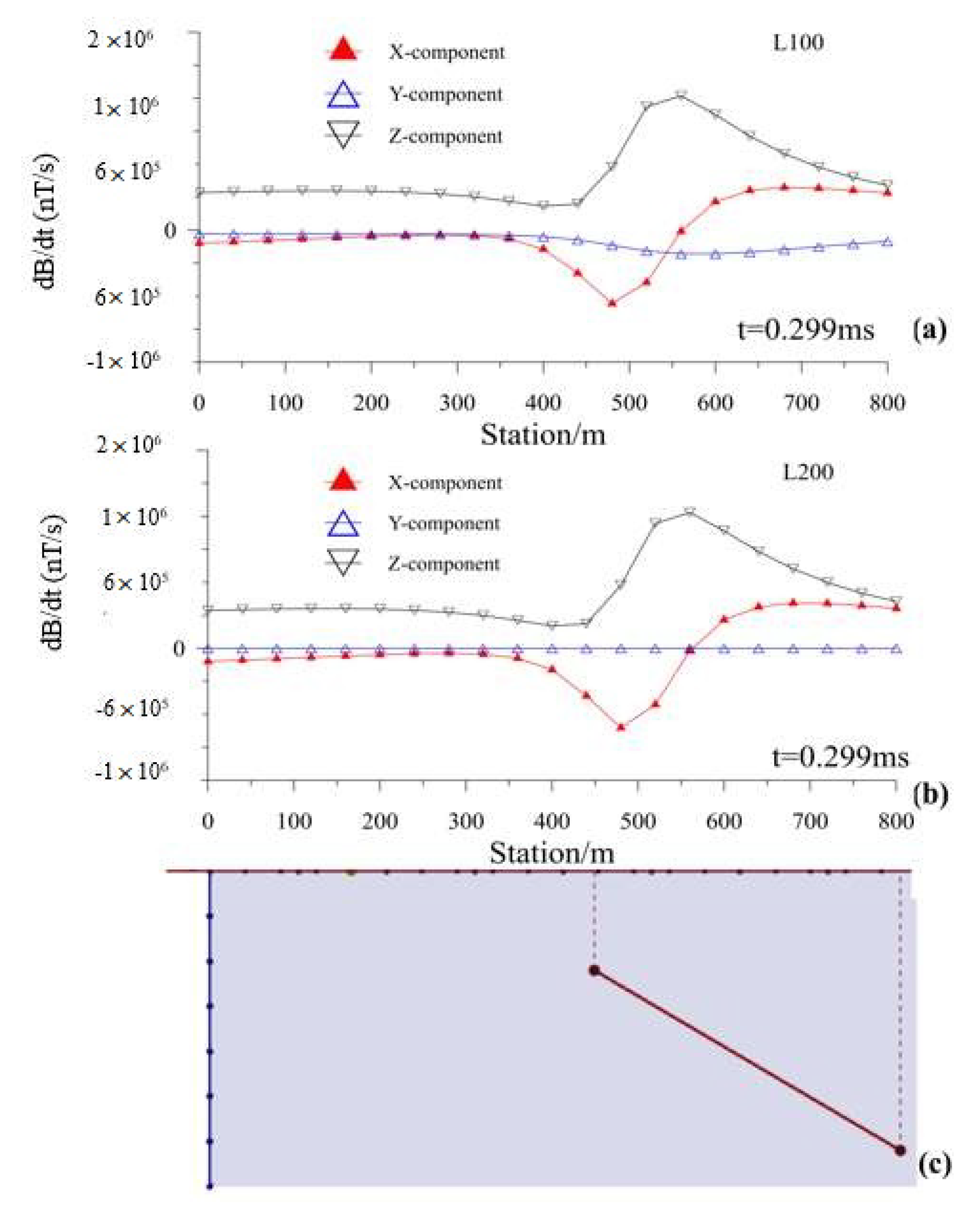

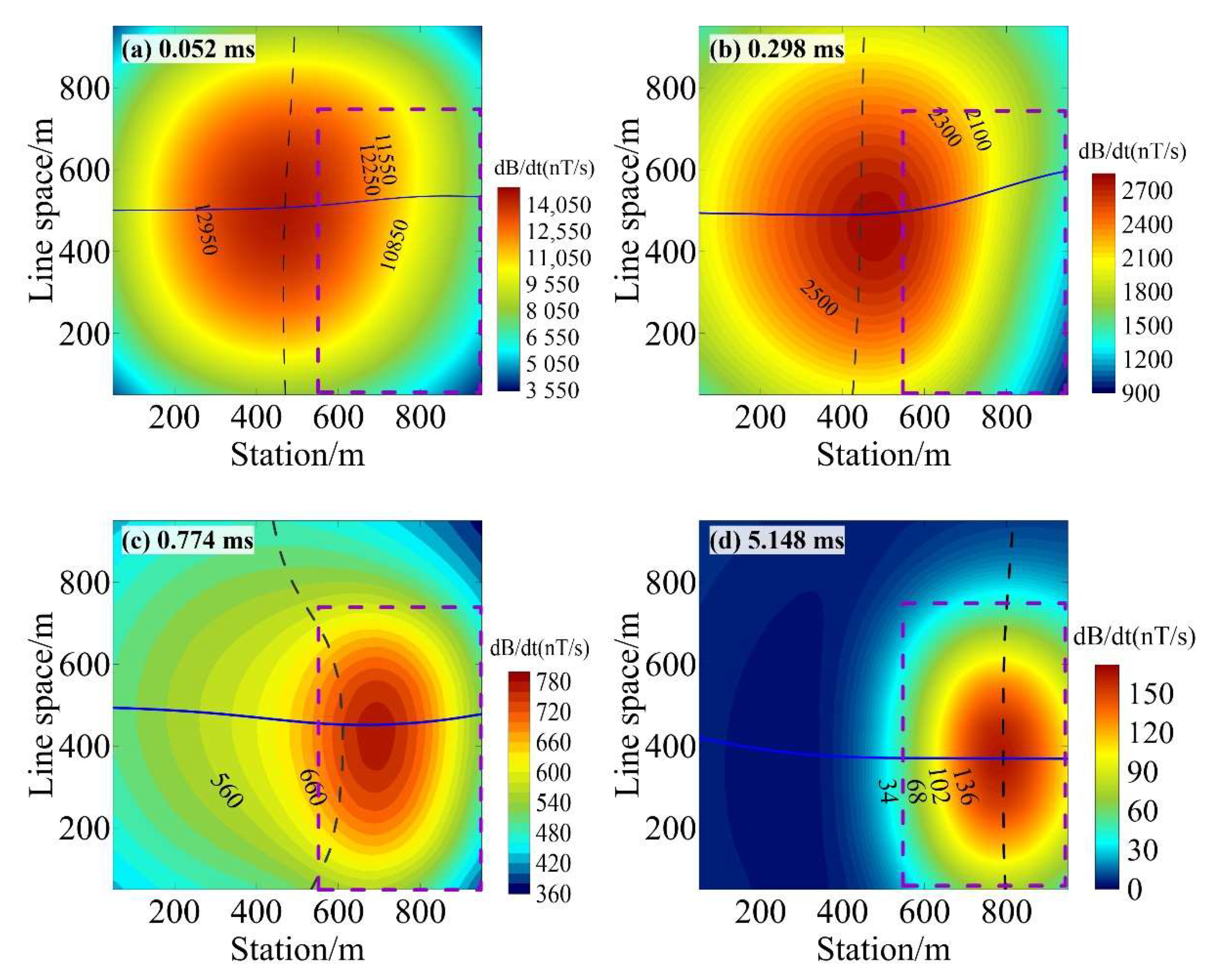
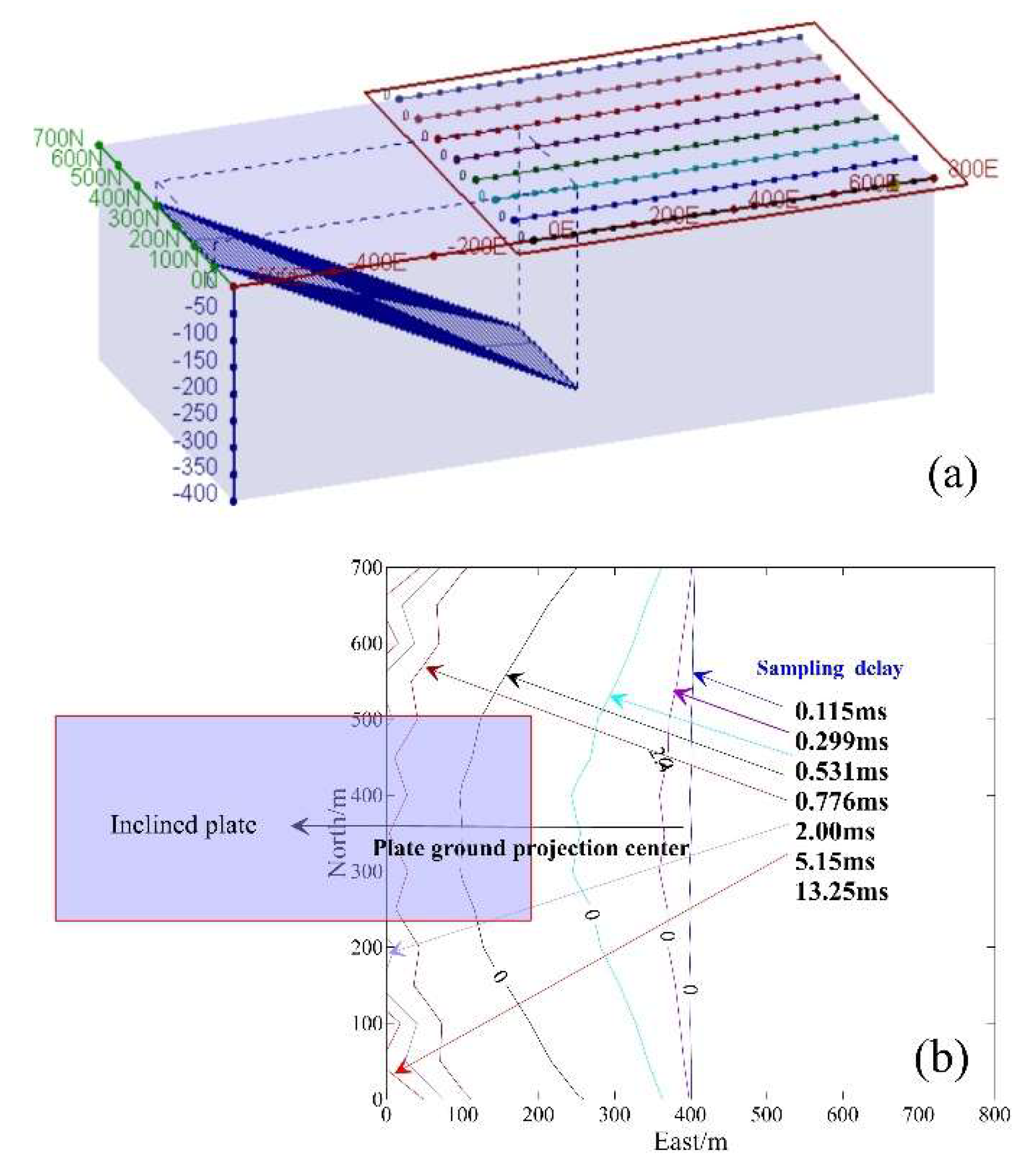


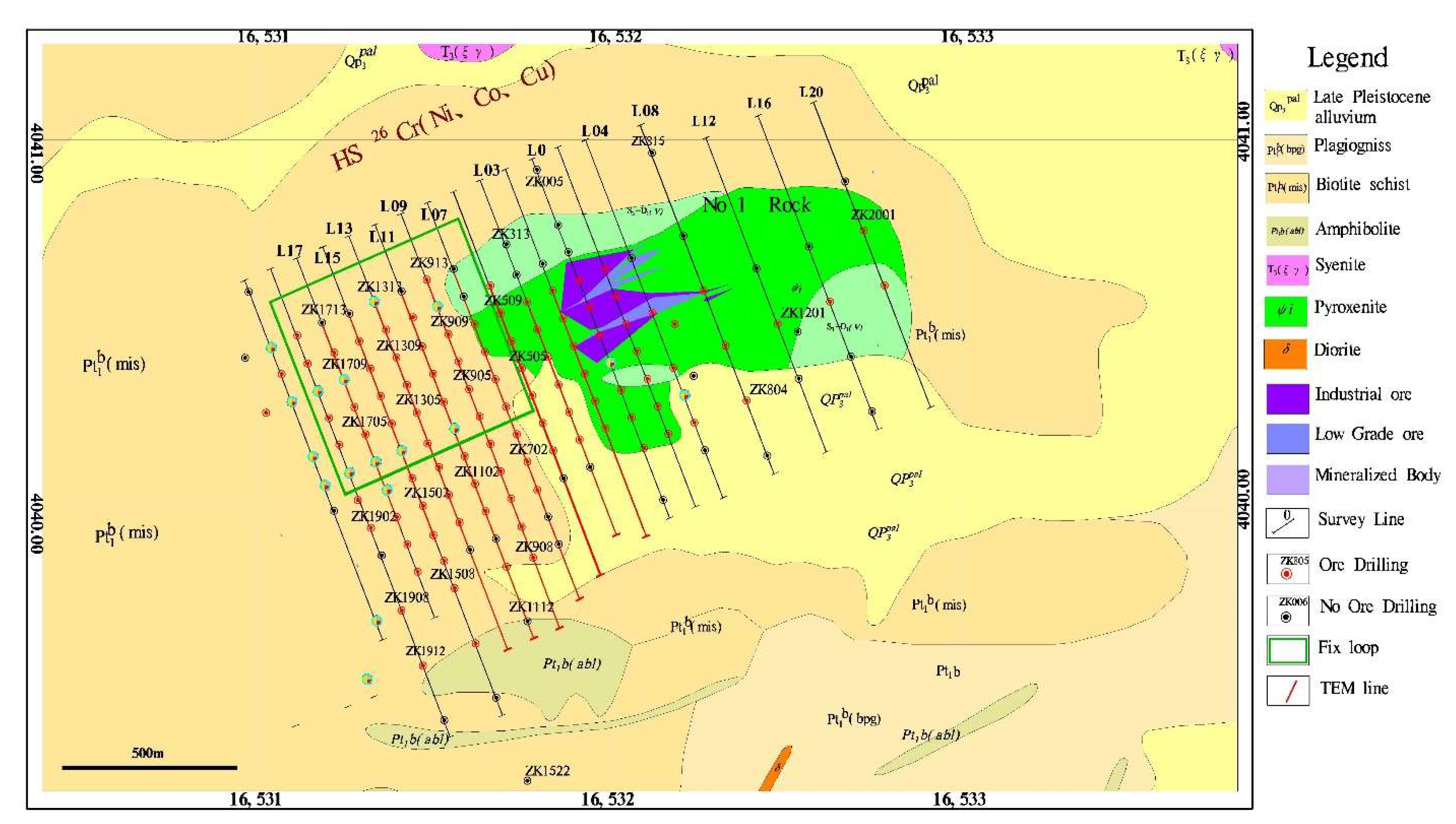
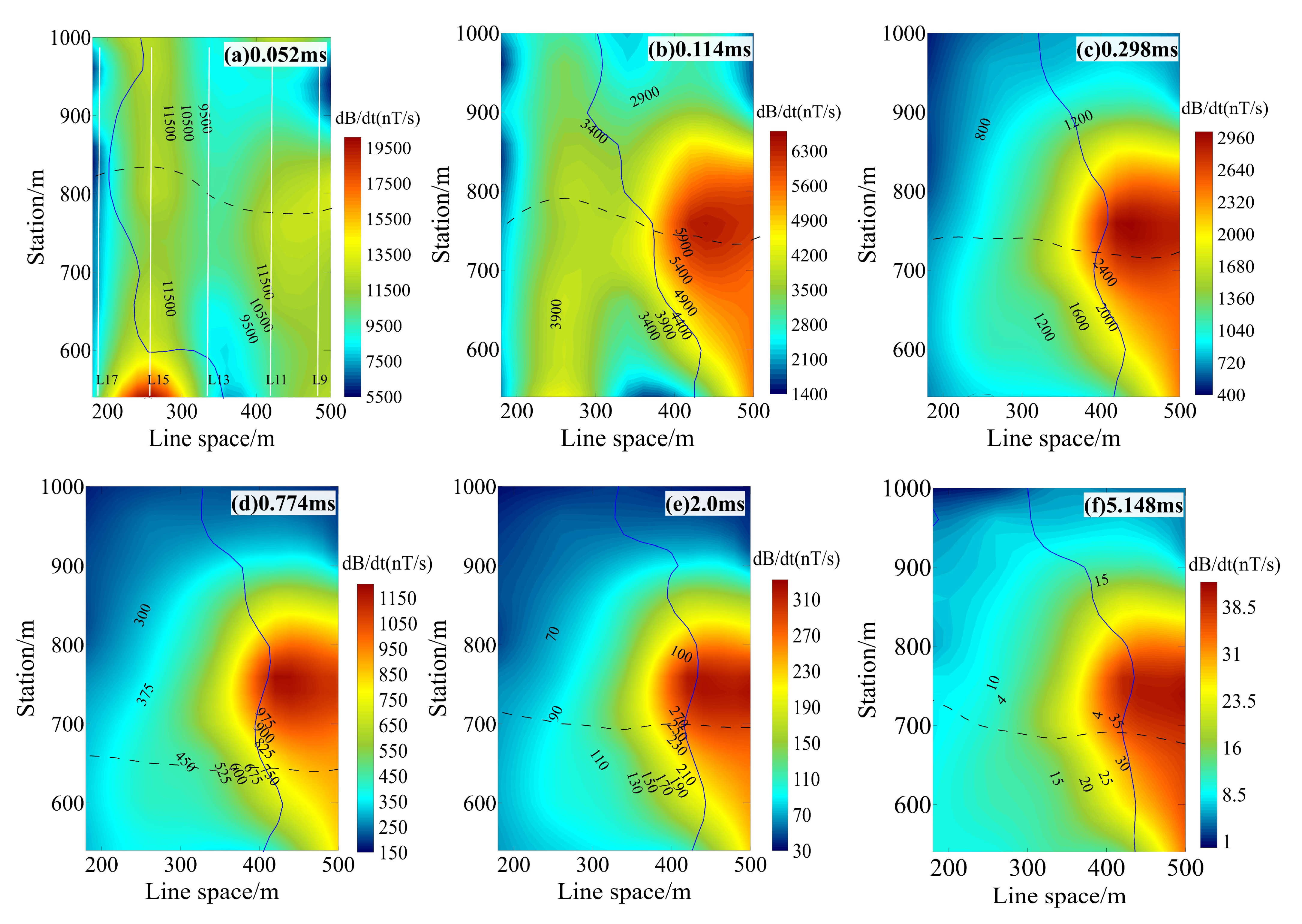
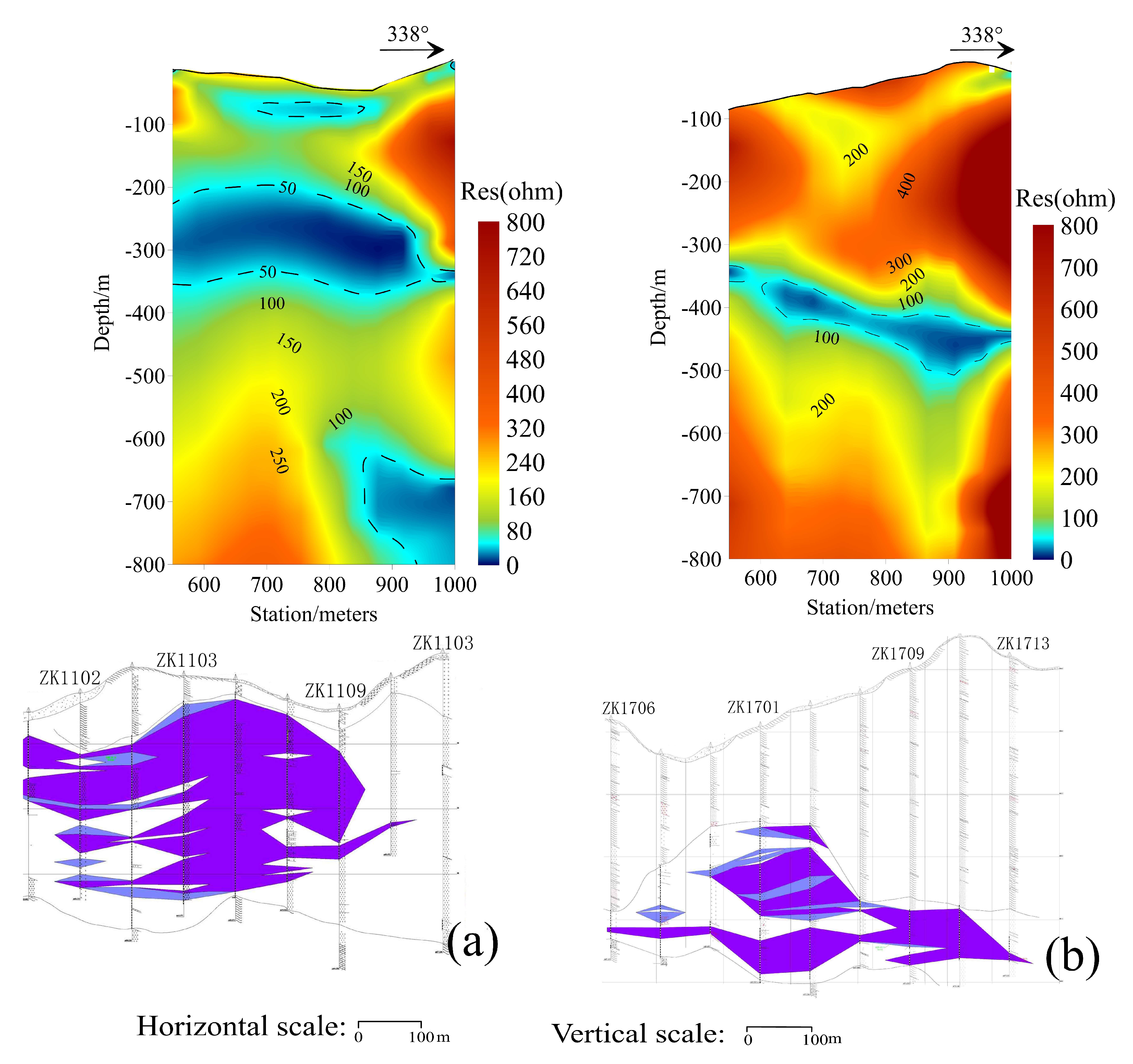
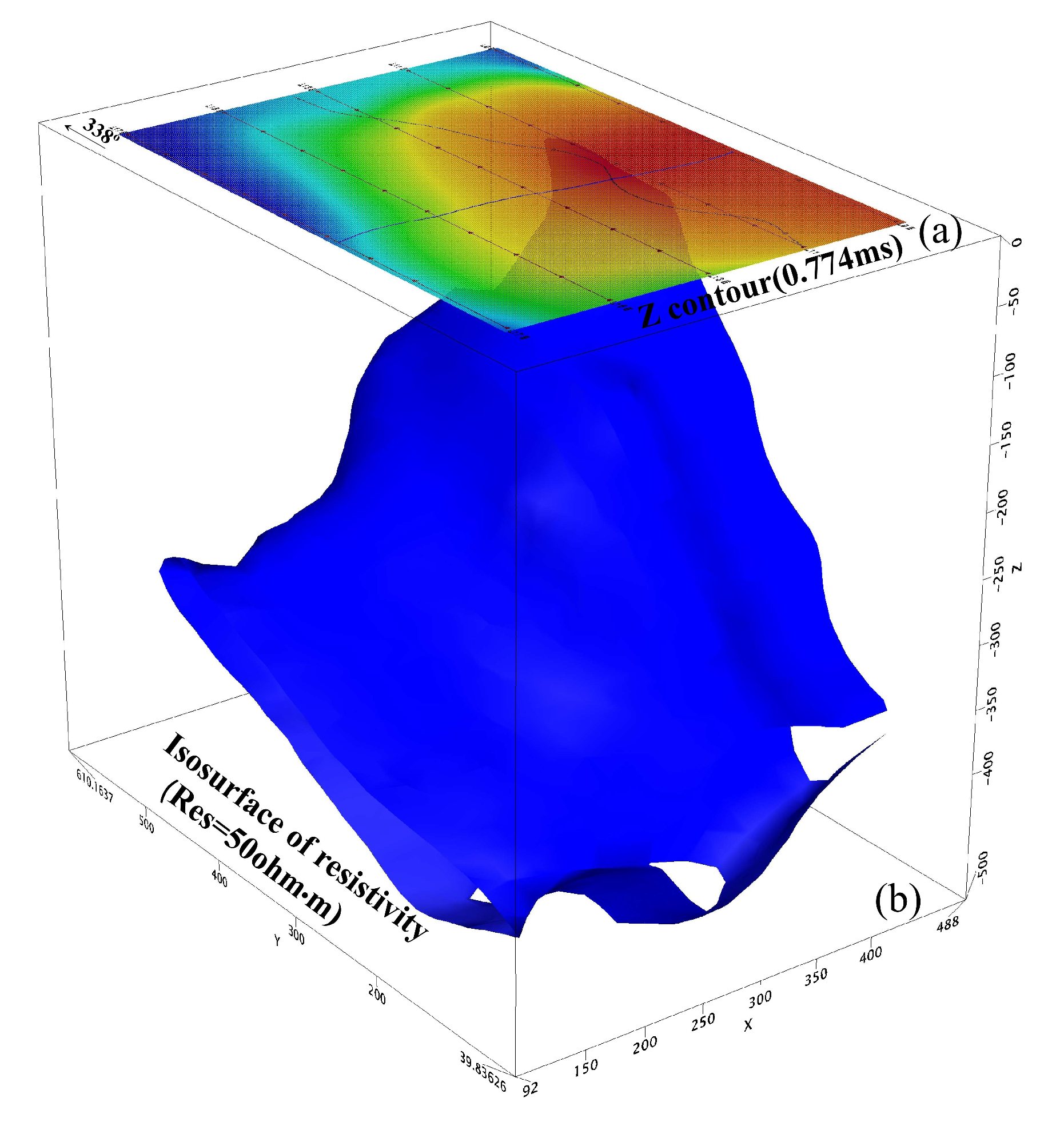
Publisher’s Note: MDPI stays neutral with regard to jurisdictional claims in published maps and institutional affiliations. |
© 2022 by the authors. Licensee MDPI, Basel, Switzerland. This article is an open access article distributed under the terms and conditions of the Creative Commons Attribution (CC BY) license (https://creativecommons.org/licenses/by/4.0/).
Share and Cite
Wang, X.; Zhi, Q.; Wu, J.; Deng, X.; Huang, Y.; Yang, Q.; Wang, J. Multicomponent Transient Electromagnetic Exploration Technology and Its Application. Minerals 2022, 12, 681. https://doi.org/10.3390/min12060681
Wang X, Zhi Q, Wu J, Deng X, Huang Y, Yang Q, Wang J. Multicomponent Transient Electromagnetic Exploration Technology and Its Application. Minerals. 2022; 12(6):681. https://doi.org/10.3390/min12060681
Chicago/Turabian StyleWang, Xingchun, Qingquan Zhi, Junjie Wu, Xiaohong Deng, Yue Huang, Qi’an Yang, and Jinhai Wang. 2022. "Multicomponent Transient Electromagnetic Exploration Technology and Its Application" Minerals 12, no. 6: 681. https://doi.org/10.3390/min12060681
APA StyleWang, X., Zhi, Q., Wu, J., Deng, X., Huang, Y., Yang, Q., & Wang, J. (2022). Multicomponent Transient Electromagnetic Exploration Technology and Its Application. Minerals, 12(6), 681. https://doi.org/10.3390/min12060681







